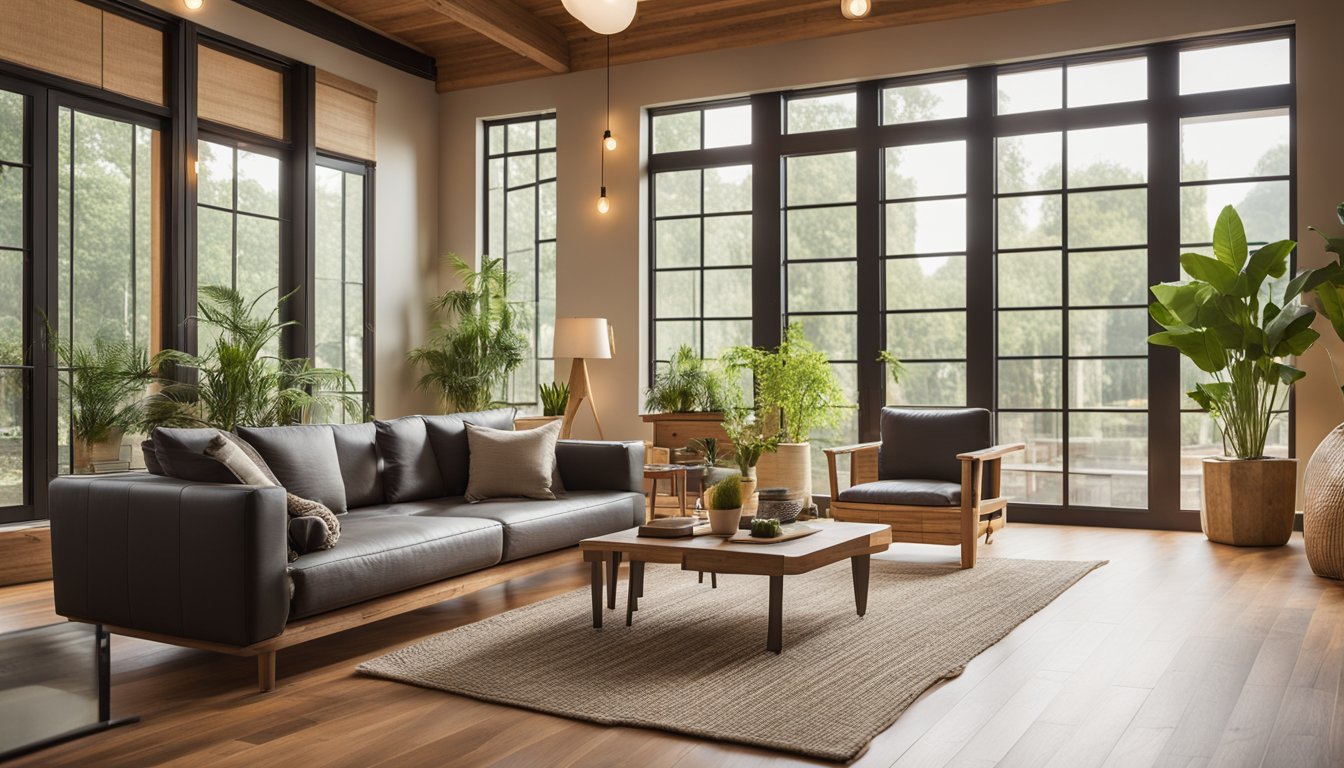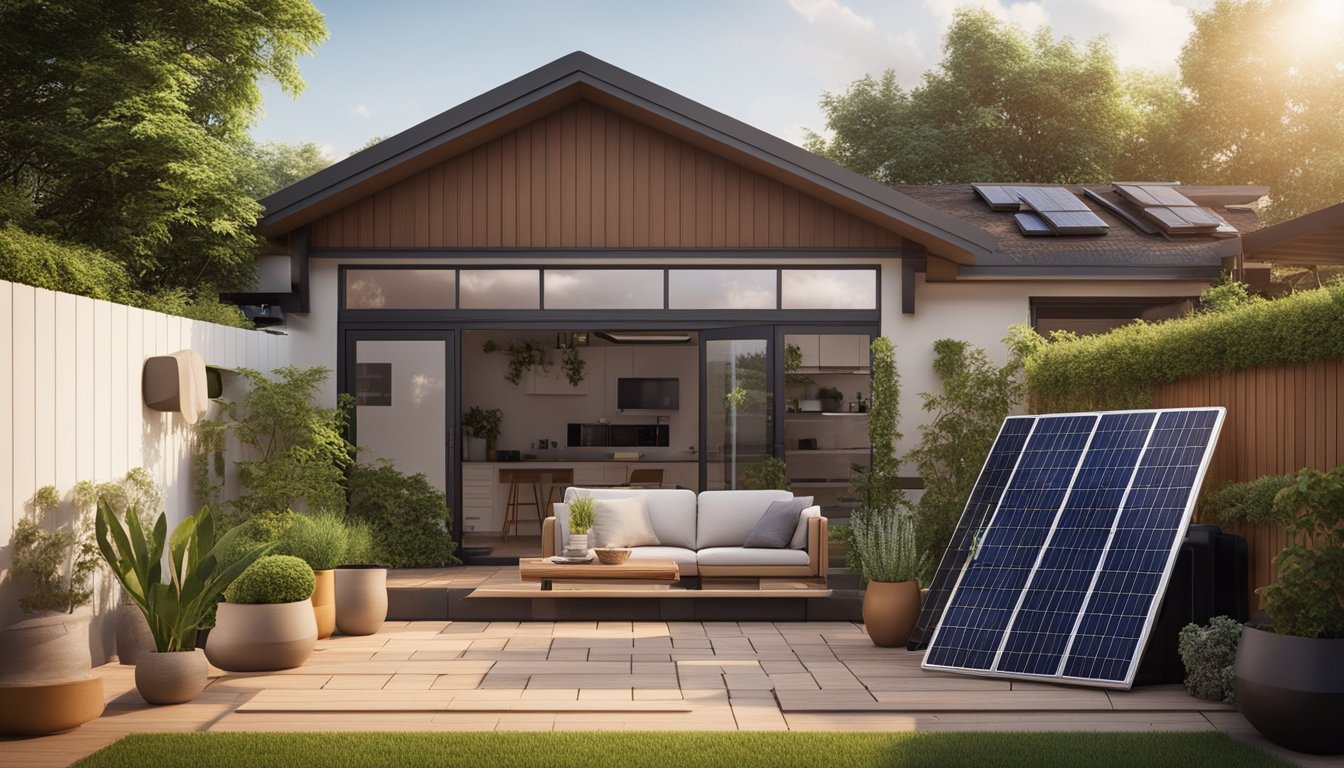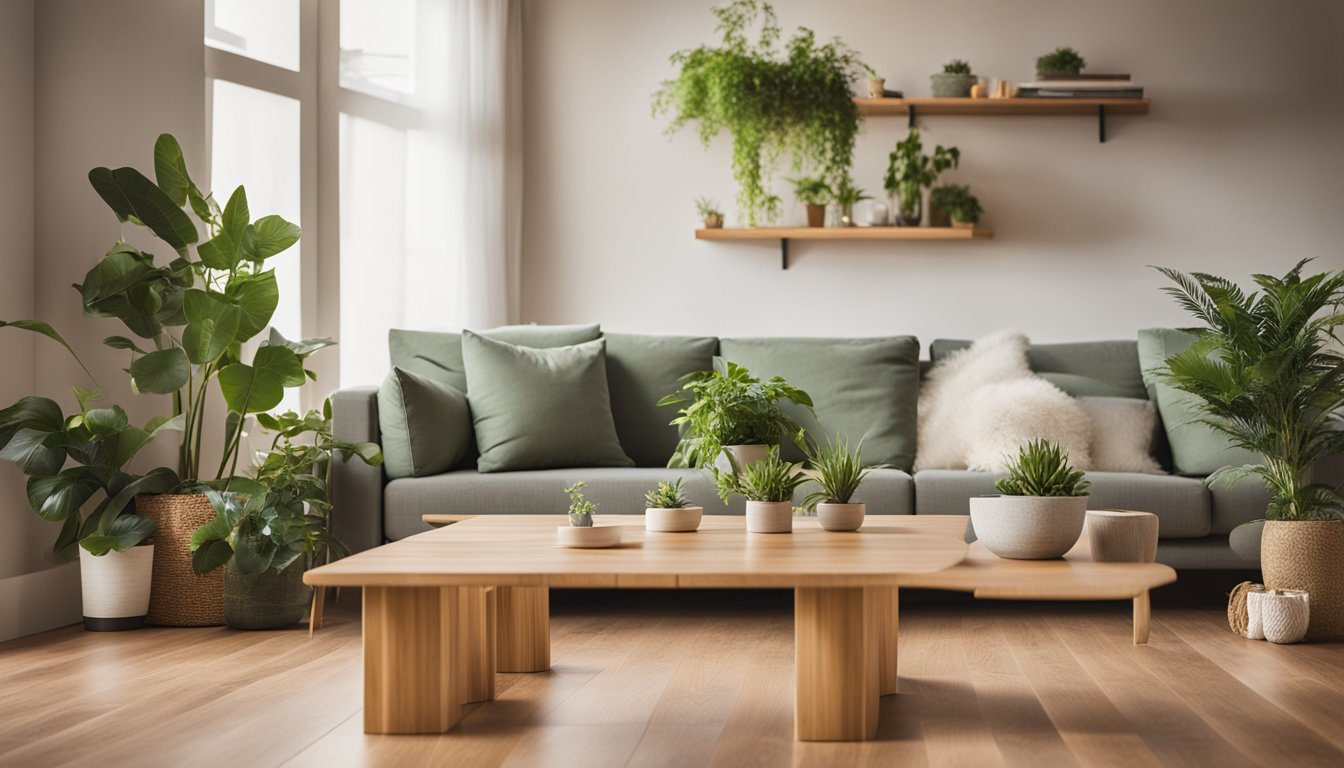Late updated: 15 Feb 2025 08:02
Written by: Daniel Harper
Creative Eco-Friendly Ideas For Home Renovations: Innovative Solutions for a Sustainable Living Space
Exploring the intersection of creativity and sustainability allows us to transform our homes while contributing positively to the environment. Eco-friendly home renovations are no longer just a fad; they are an integral approach toward sustainable living. Embracing eco-friendly renovation ideas enables us not only to reduce our carbon footprint but also to enhance the aesthetic and functional value of our homes.

Our journey isn’t just about installing solar panels or using recycled materials—it's about integrating innovative solutions that align with our values and lifestyle. From energy-efficient appliances to water-saving fixtures, there are countless ways to make our spaces more sustainable. Each change, no matter how small, plays a critical role in preserving resources for future generations.
Let’s dive into several creative, eco-conscious strategies that support environmental sustainability without compromising on style or quality. By rethinking the way we renovate, we can set the stage for a more sustainable existence while enjoying modern comforts in our living spaces.
Key Takeaways
- Eco-friendly renovations benefit both the environment and home value.
- Innovative solutions like energy-efficient and water-saving technologies are key.
- Sustainable renovations enhance our living spaces without sacrificing style.
Fundamentals of Eco-Friendly Home Renovations
Eco-friendly home renovations are essential for reducing our carbon footprint and promoting a sustainable future. By focusing on energy consumption and sustainable materials, we create spaces that are both efficient and environmentally responsible.
Assessing Your Energy Consumption
The first step in eco-friendly renovations involves evaluating how much energy our homes currently consume. Assessing energy use gives us a baseline to work from and illustrates where improvements can be made.
We should utilise energy-efficient appliances and implement smart home systems to monitor usage. Installing insulation and upgrading windows can significantly reduce heating and cooling demands, making our homes more efficient and comfortable. Regular audits help identify areas for improvement, such as outdated lighting or inefficient heating systems.
Improving energy efficiency not only cuts down on energy bills but also reduces environmental impact. In embracing these changes, we make strides towards sustainable living.
Choosing Sustainable Materials
Selecting sustainable materials is a cornerstone of eco-friendly renovations. Such materials are often renewable, recycled, or reclaimed, which reduces environmental harm associated with production and waste.
Utilising reclaimed wood, bamboo, and recycled metal contributes to reduced resource consumption. These choices not only provide aesthetic appeal but also support sustainable construction practices. Opting for paints and finishes with low volatile organic compounds (VOCs) improves indoor air quality, offering healthier living environments.
Sustainable materials remain a crucial aspect in creating eco-friendly spaces. By choosing environmentally responsible options, we not only enhance our home’s sustainability but also set a standard for future renovations.
Implementing Green Solutions

Implementing green solutions in home renovations not only reduces environmental impact but also enhances the functionality and efficiency of our homes. Key strategies include the use of renewable energy sources, the integration of smart technologies, and water conservation techniques.
Incorporating Renewable Energy Sources
Utilising renewable energy is a pivotal step toward creating an eco-friendly home. Solar panels are at the forefront, enabling us to generate electricity by harnessing the sun's power. Installation can be planned on rooftops or in garden spaces, maximising exposure to natural light. This investment reduces reliance on traditional energy sources and over time, decreases electricity bills significantly.
Green roofs represent another innovative option, offering natural insulation and promoting biodiversity. They improve air quality and reduce heat absorption. Pairing these solutions with energy-efficient windows can further conserve energy by maintaining indoor temperatures, reducing the need for heating and cooling.
Enhancing Efficiency with Smart Technology
Incorporating smart technology enhances energy efficiency throughout the home. Smart thermostats allow us to control heating and cooling remotely, using intelligent systems to adjust temperatures based on daily routines and occupancy. This precision minimises energy waste and contributes to lower utility expenses.
Programmable thermostats and energy-efficient appliances like Energy Star certified products ensure optimal energy use. These appliances are designed to consume less electricity and water, providing a practical approach to sustainable living. Transforming our homes into smart homes not only saves resources but also improves convenience and comfort.
Water Conservation Techniques
Water conservation is essential in sustainable home renovations. Low-flow fixtures like taps and showerheads reduce water usage while maintaining performance. Implementing rainwater collection systems enables us to harvest rainwater for garden irrigation or even toilets, decreasing reliance on municipal water supplies.
Water-saving fixtures such as dual-flush toilets offer additional savings by providing options for different flush volumes. Combining these with efficient ventilation systems helps in maintaining optimal indoor air quality, ensuring a healthy and comfortable living environment. Embracing these techniques not only preserves valuable water resources but also contributes to an environmentally responsible lifestyle.
Frequently Asked Questions

When considering eco-friendly home renovations, selecting the right materials and techniques can greatly influence sustainability and cost-effectiveness. Balancing innovation with practicality enhances both environmental and financial outcomes.
What materials can be used for sustainably refurbishing internal walls?
Sustainably refurbishing internal walls can involve materials like reclaimed wood, recycled metal, and natural plaster. We recommend exploring low-VOC paints to improve indoor air quality and selecting insulation from recycled materials. Opt for solutions that not only reduce environmental impact but also create healthier living spaces.
How can I ensure my home renovation is eco-friendly while adhering to a budget?
To achieve eco-friendly renovations on a budget, prioritise projects like insulating walls, upgrading to LED lighting, and installing low-flow water fixtures. We suggest focusing on improvements that reduce utility bills over time. Consider phased renovations to manage costs and select locally sourced materials to minimise transportation impact.
What are pioneering, sustainable materials suitable for home construction?
Pioneering sustainable materials include bamboo, reclaimed brick, and cross-laminated timber. These materials offer durability while reducing carbon footprints associated with traditional construction processes. We urge homeowners to explore these options, as they often support both environmental efficiency and innovative design.
In what ways can a house be remodelled to enhance its environmental efficiency?
Enhancing a home's environmental efficiency involves upgrading insulation, improving sealing around doors and windows, and installing energy-efficient appliances. Incorporating solar panels and rainwater harvesting systems can further reduce the home's ecological footprint. We should also consider smart home technologies for efficient energy management.
Could you list examples of eco-friendly construction techniques?
Eco-friendly construction techniques include modular building, which reduces material waste, and utilising prefabricated components. Green roofs and double-glazing create thermal efficiency. We encourage techniques like passive solar design and using natural ventilation to minimise energy consumption effectively.
How does one select sustainable finishing materials for home renovation?
Selecting sustainable finishing materials involves choosing options like low-VOC paints and finishes, sustainably sourced wood, and recycled countertops. We find that prioritising durable materials that minimise replacement needs helps in creating long-term sustainability. Look for certifications indicating eco-friendliness to make informed decisions.
